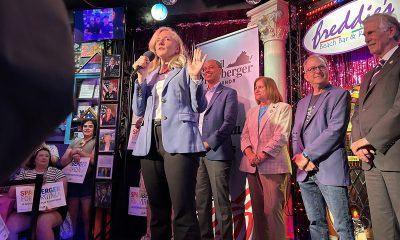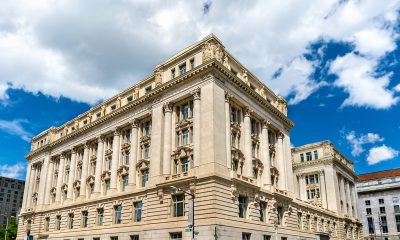Arts & Entertainment
Thousands brave heat for pride parade, festival
Mayor, ten Council members march in parade
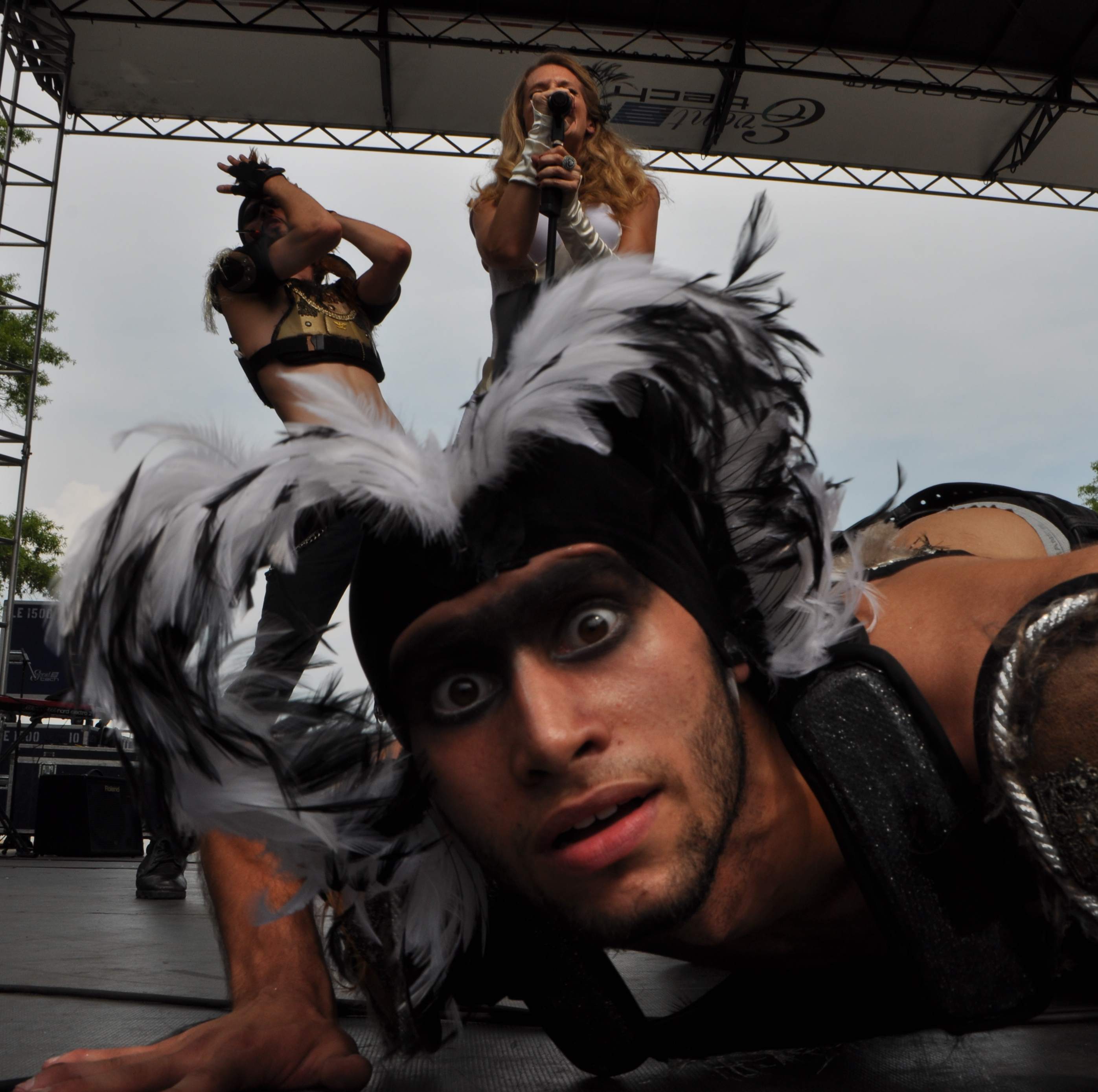
With the U.S. Capitol as a dramatic backdrop, tens of thousands of LGBT people and their friends and families jammed Pennsylvania Avenue on Sunday for the District of Columbia’s 36th annual Capital Pride festival.
One day earlier, D.C. Mayor Vincent Gray and ten members of the 13-member D.C. City Council joined dozens of LGBT groups, colorful floats, marching bands, and thousands of individual marchers in the annual Capital Pride Parade, which snaked its way along city streets lined with thousands of spectators.
Gray also spoke at Sunday’s festival before introducing the day’s lead entertainer, Broadway actress and singer Jennifer Holliday, who debuted her new single “Magic,” marking the song’s word premiere.
Although city officials and police no longer provide official crowd estimates for large-scale events, Capital Pride organizers said they believe between 200,000 and 250,000 people turned out for the parade and festival.
“Everything was absolutely fantastic,” said Capital Pride spokesperson Scott Lusk. “All of our community partners and volunteers and attendees showed up in great numbers and with great enthusiasm. It was an absolute fantastic weekend.”
Eighteen-year-old Tiffany Johnson from Southeast D.C., who stood with a group of friends near the festival’s main stage just before Holliday began her performance, said this year’s festival represented the first time she had ever attended Capital Pride.
“It’s just awesome,” she said. “It’s just so great to be able to come out to something like this.”
Angelo Jimenez, 54, a resident of Richmond, Va., said this year’s festival marked the 31st consecutive year he has traveled to D.C. to attend the city’s Pride festival.
“I came for the first time in 1980 and haven’t missed a single year,” he said. “That tells you how much this means to me.”
Other festival attendees who approached the Blade’s booth identified themselves as residents of states up and down the mid Atlantic region as well as from the D.C. metropolitan area.
Gray and a contingent of city officials, including gay activist Jeffrey Richardson, director of the city’s Office of GLBT Affairs, walked along Saturday the entire parade route, which began at 22nd and P Streets, N.W., near Dupont Circle, and ended nearly two miles later at 14th and N Streets, N.W., near Thomas Circle.
Most of the Council members, including gay Council members David Catania (I-At-Large) and Jim Graham (D-Ward 1), also walked or rode in cars along the full parade route.
The other Council members participating in the parade included Council Chair Kwame Brown (D-At-Large) and Council members Phil Mendelson (D-At-Large), Michael Brown (I-At-Large), Vincent Orange (D-At-Large), Jack Evans (D-Ward 2), Mary Cheh (D-Ward 3), Muriel Bowser (D-Ward 4), and Tommy Wells (D-Ward 6).
Gray had invited the Council members to join his contingent, which he named the “D.C. 41,” in recognition of the 41 city officials and activists, including Gray and six Council members, who were arrested in April outside a Senate office building near the Capitol in a protest against congressional intrusion in D.C. affairs.
But most of the Council members chose to march or ride in their own contingents just behind the mayor’s contingent.
Following closely behind the D.C. elected officials’ contingents was Adam Ebbin, the openly gay member of the Virginia House of Delegates from Alexandria, who is running for a seat in the Virginia Senate.
The parade was led by an escort of D.C. police cars staffed by members of the department’s Gay and Lesbian Liaison Unit.
Following closely behind the police escort was a contingent of leaders and supporters of the Trevor Project, a nationally recognized organization that works to prevent LGBT teen suicide. Capital Pride selected the Trevor Project contingent as the parade’s grand marshal.
A D.C. Public Schools contingent was among the parade contingents that attracted considerable attention and drew loud applause throughout the parade route. It included teachers, parents, and elementary school kids, with some waving rainbow flags.
Similar to past years, D.C.’s Different Drummers, the city’s LGBT marching band, and the Lesbian and Gay Big Apple Corps Marching Band of New York City marched and performed in the parade.
Capital Pride organizers said they were especially pleased with the wide diversity of groups and vendors that participated in both the parade in festival. In addition to a large number of national and local LGBT organizations, such as the Human Rights Campaign, the National Gay & Lesbian Task Force, the Gertrude Stein Democratic Club, and the Gay & Lesbian Activists Alliance, LGBT oriented religious, sports, and social groups participated in both event, organizers said.
A number of the city’s gay bars and nightclubs also had colorful floats in the parade. Bathing suit clad men danced to music blaring from a float from Nellie’s Sport Bar. Drag performers and male go-go dancers in bathing suites also danced to music broadcast from loud speakers atop two large flatbed trucks that made up the float for Ziegfeld’s-Secrets, the gay club in Southwest D.C. that features drag shows and male strippers.
A number of new commercial and corporate venders participated in this year at the festival, according to Capital Pride officials. Among them were the Saab automobile company and Macy’s department stores. Both were among this year’s Capital Pride corporate sponsors.
Among some of the others displaying their information at festival booths were the Goddard Space Flight Center Gay, Lesbian, Bisexual and Transgender Advisory Committee; the Corcoran Gallery of Art and College of Art; the Gay-Straight Alliance of Montgomery Blair High School in Montgomery County, Md.; the Embassy of Sweden; Amtrak; the Capital Cat Clinic; the D.C. Office of Human Rights and D.C. Child and Family Services Agency.
Capital Pride board president Michael Lutz said this year’s festival included expanded family related activities, with a special family section that provided children’s games and children’s entertainment.
The Washington Nationals Baseball Team also had a presence at the festival, with at least one of its “racing presidents,” actors dressed as past U.S. president with oversized puppet-like heads, walking through the festival grounds.
The Nationals are hosting the annual LGBT “Night Out at the Nationals” game on June 21, which is sponsored by the local LGBT sports group Team D.C.
Capital Pride officials have said it costs about $500,000 to put on the annual D.C. pride events, including the parade and festival. Lutz said contributions from corporate sponsors, at least 25 local and national LGBT and LGBT-supportive organizations who sign on as Pride Community Partners, and fundraising events generate the funds needed to pay for Capital Pride.
“We’re in great shape financially,” said Lutz, who noted that a full accounting of the group’s finances is released each year after an independent accountant completes the bookkeeping process.
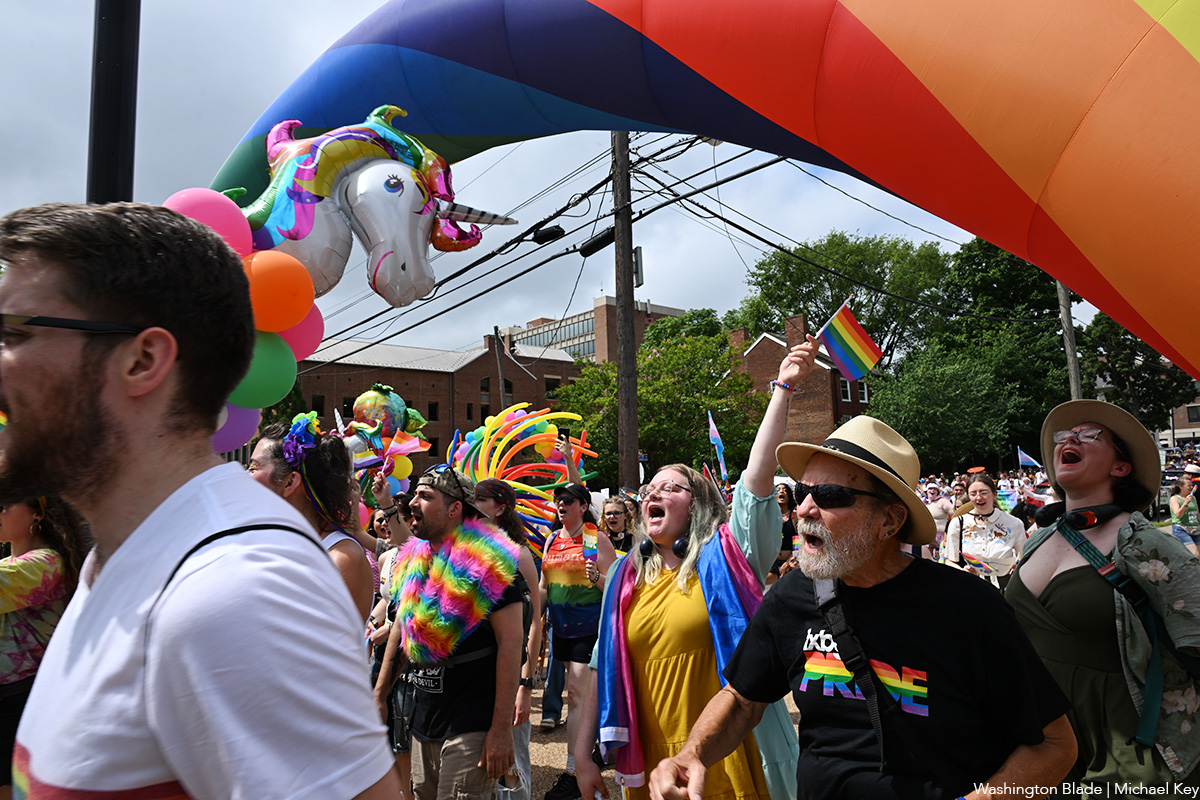
The fifth annual Fredericksburg Pride march and festival was held on Saturday, June 28. A march through the streets of downtown Fredericksburg, Va. was followed by a festival at Riverfront Park.
(Washington Blade photos by Michael Key)
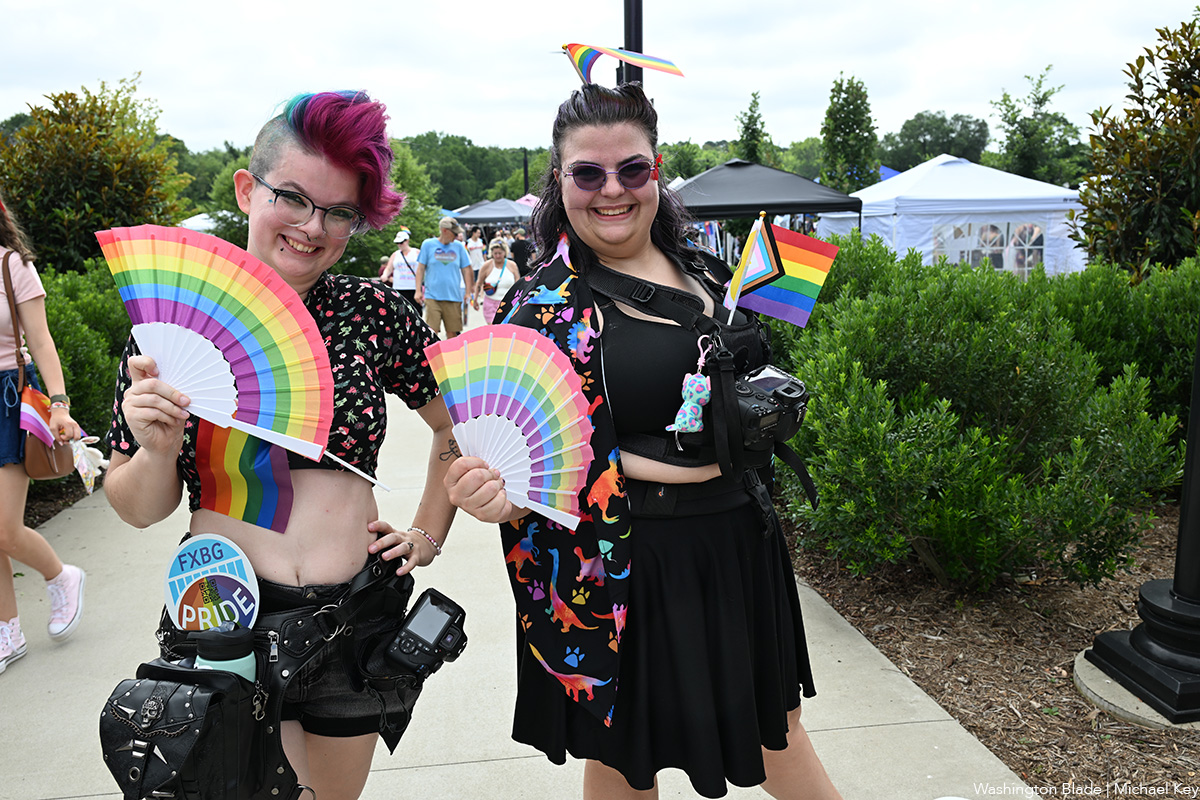
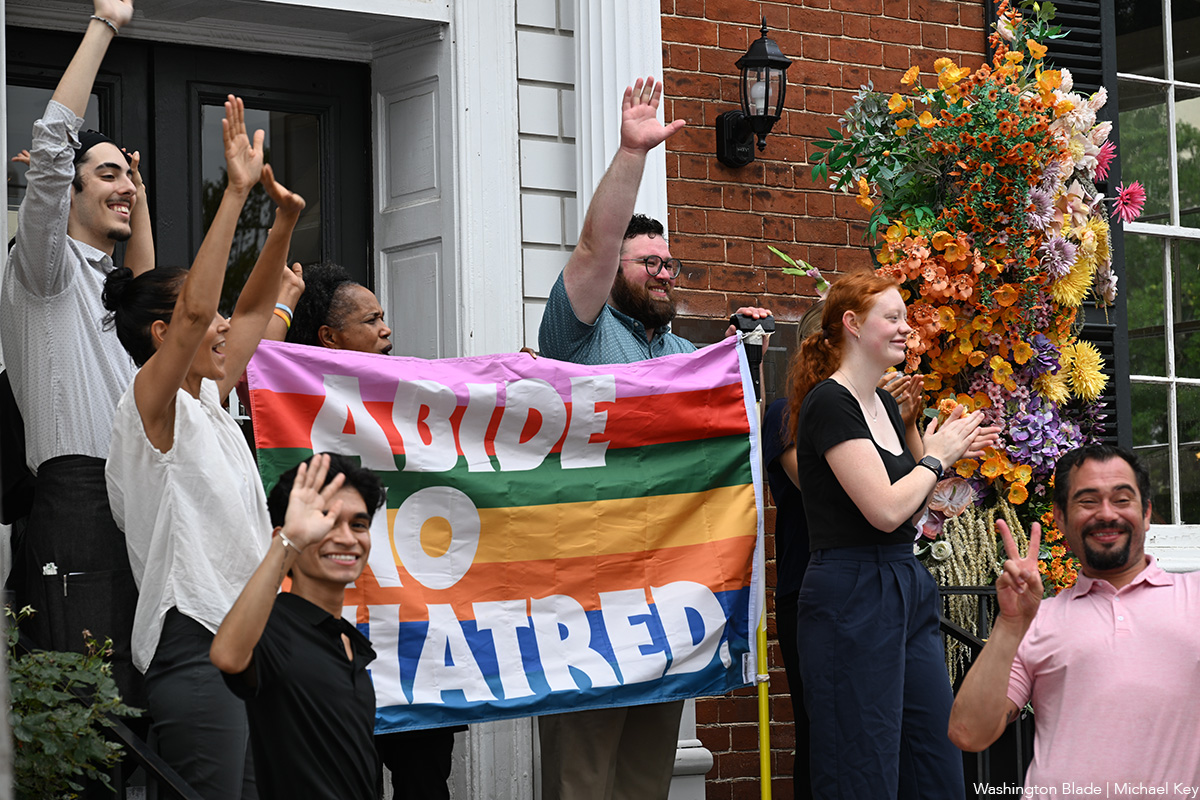
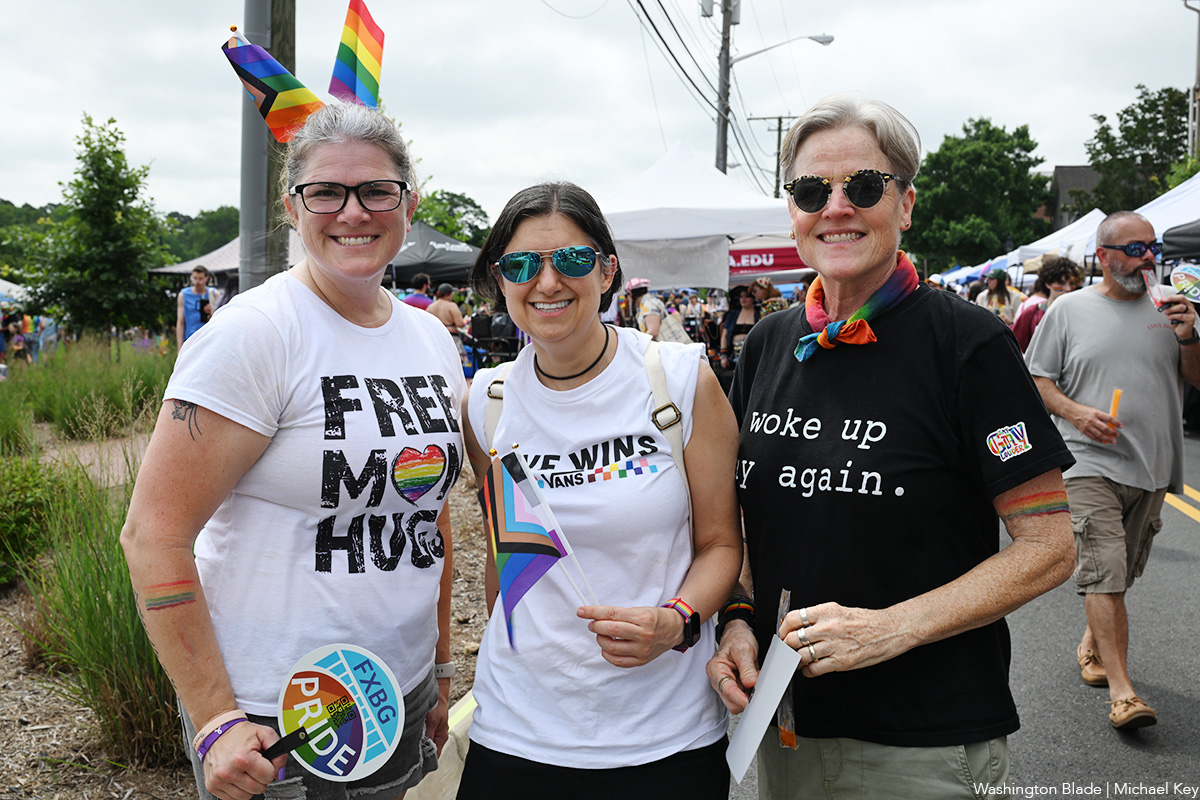
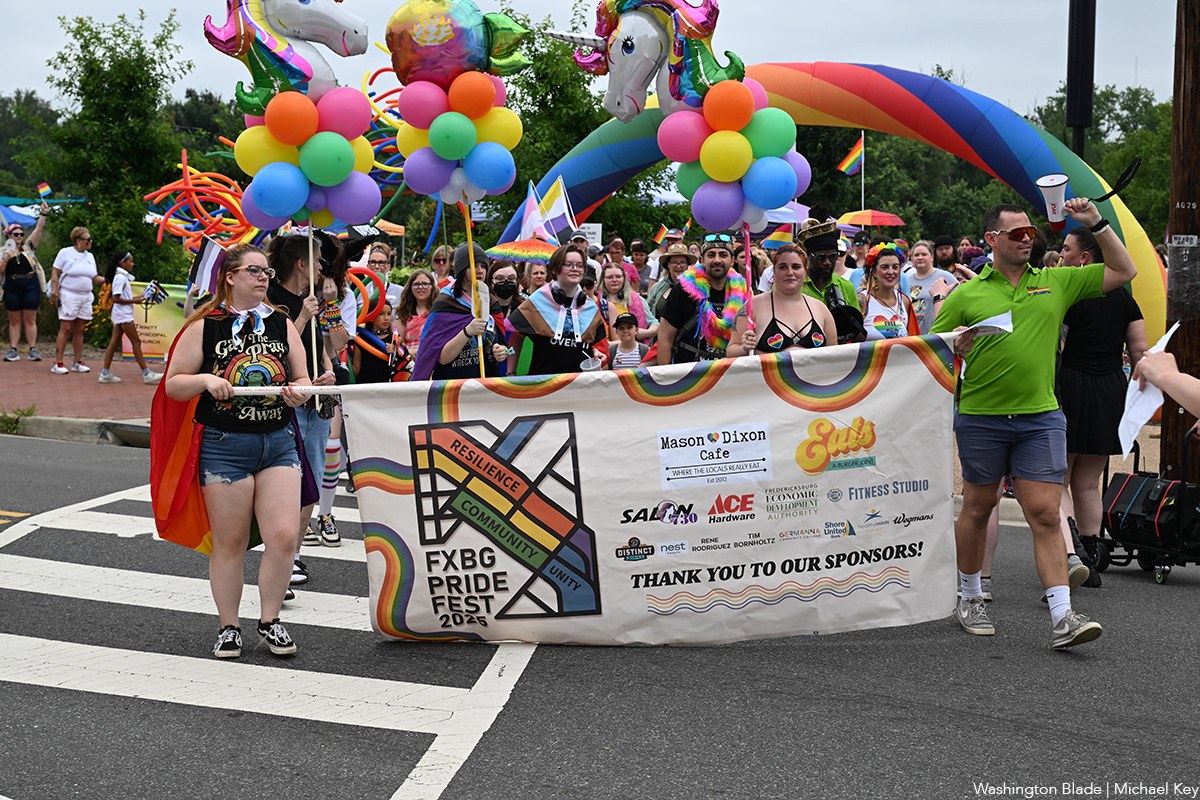
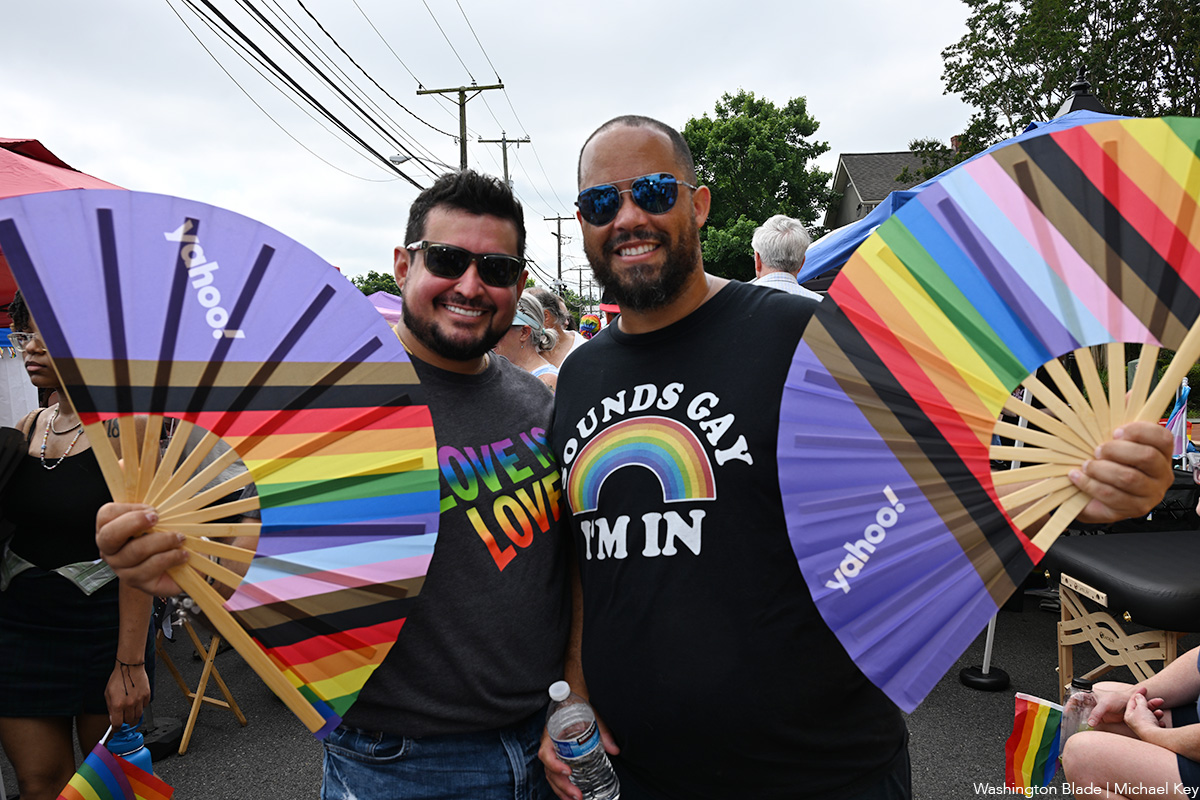
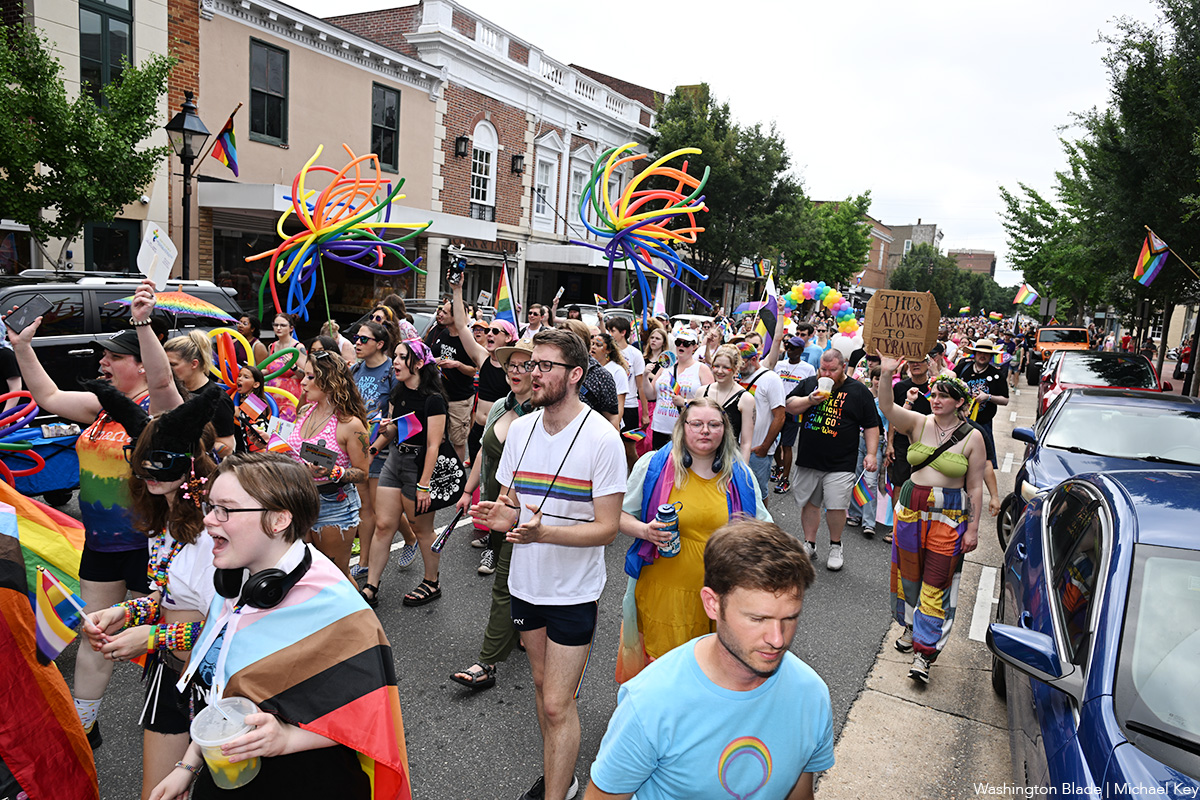
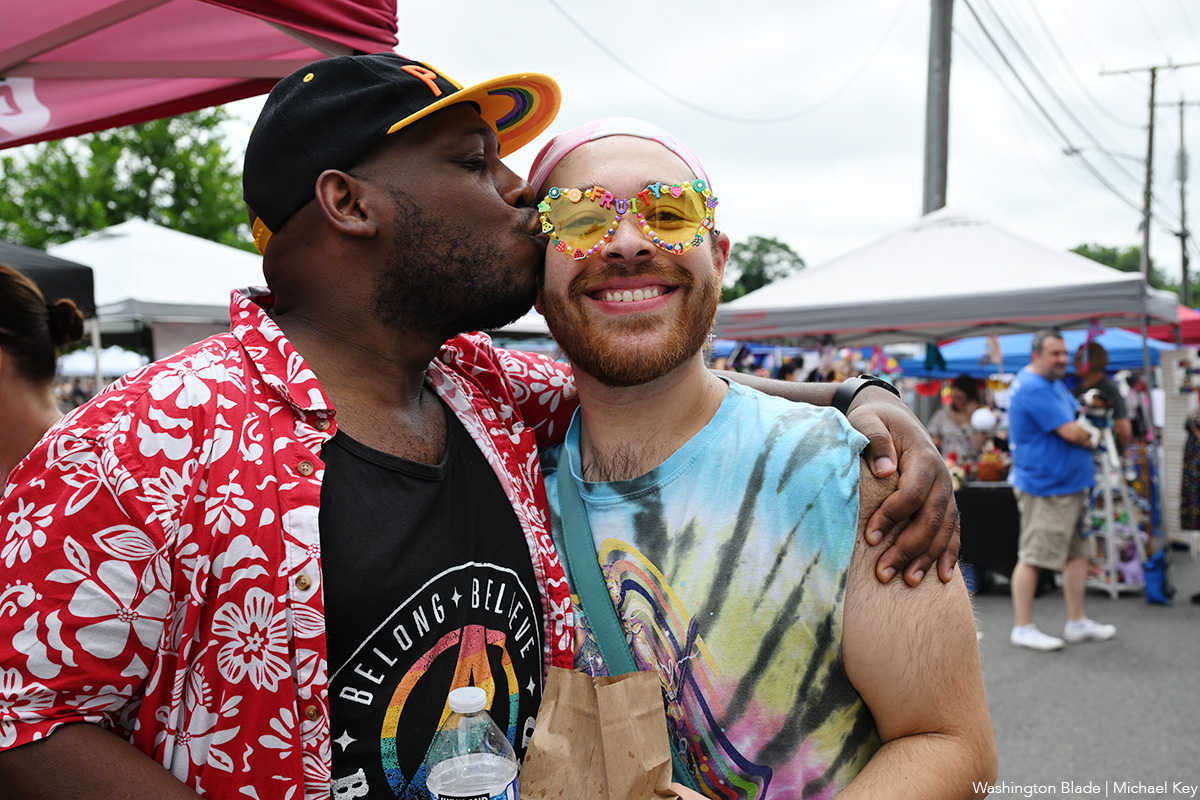
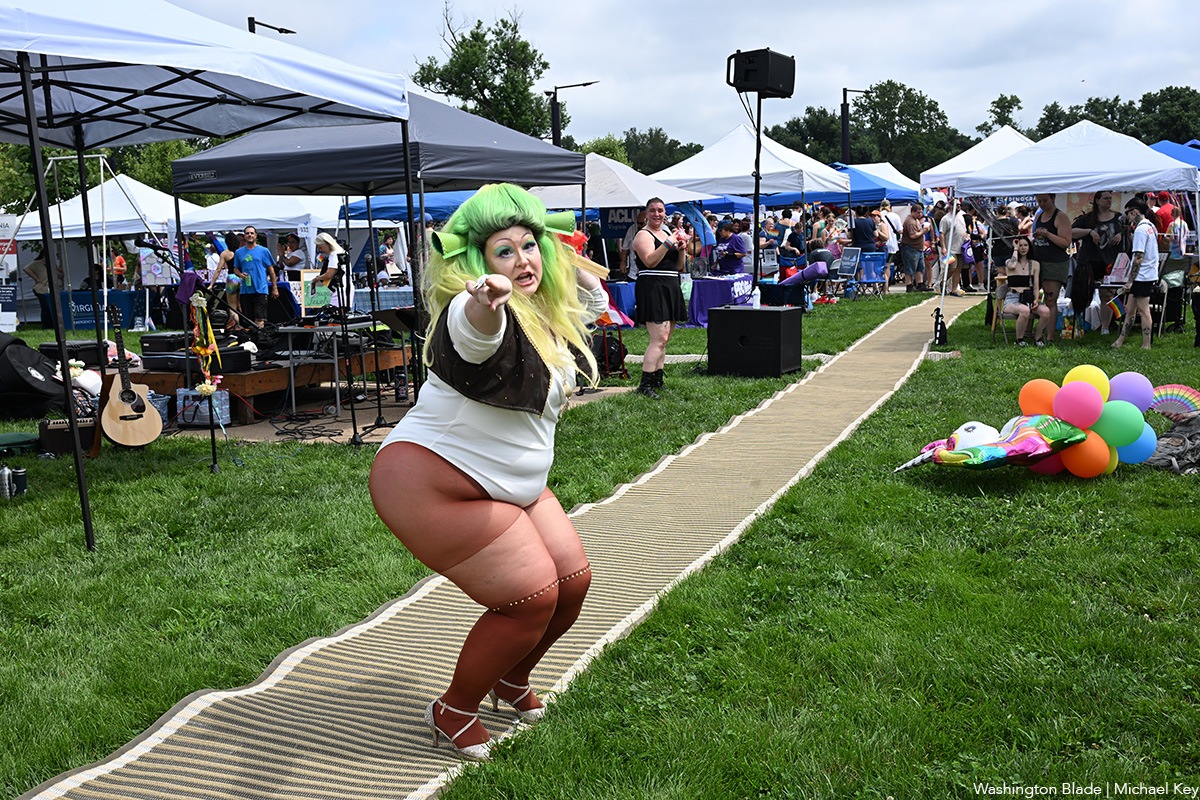
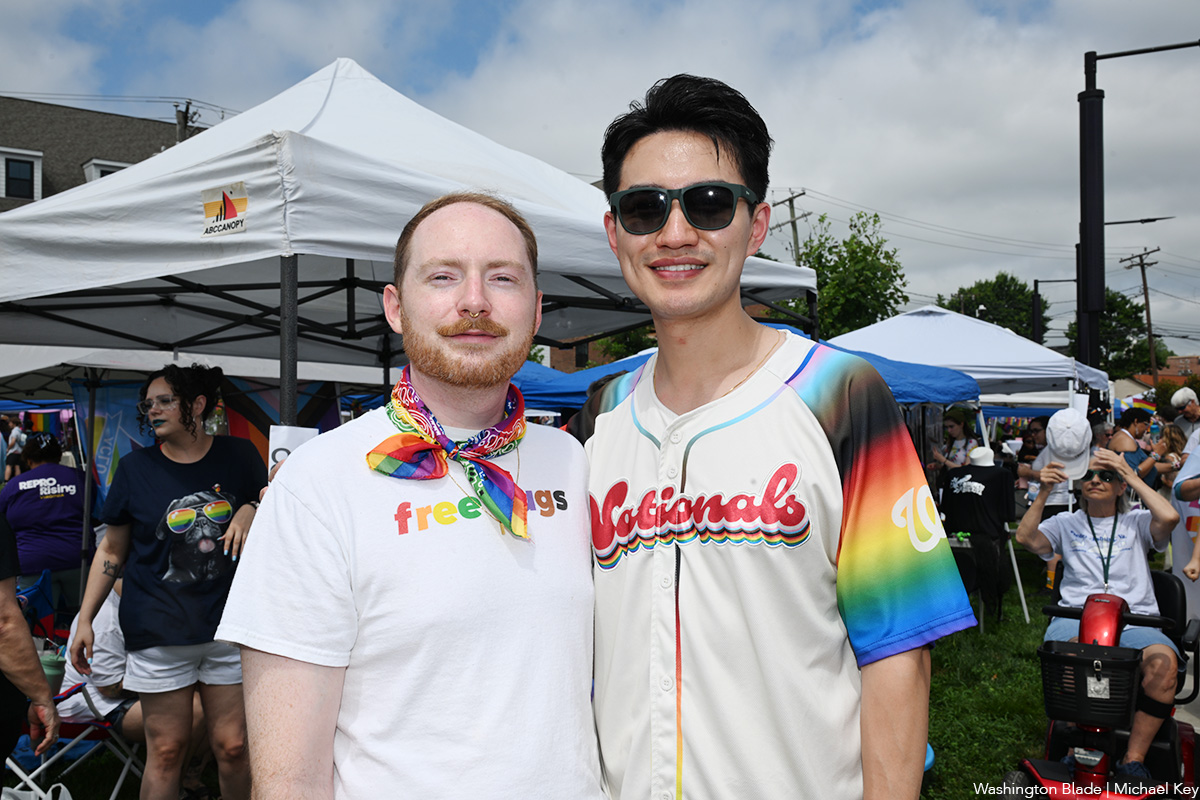

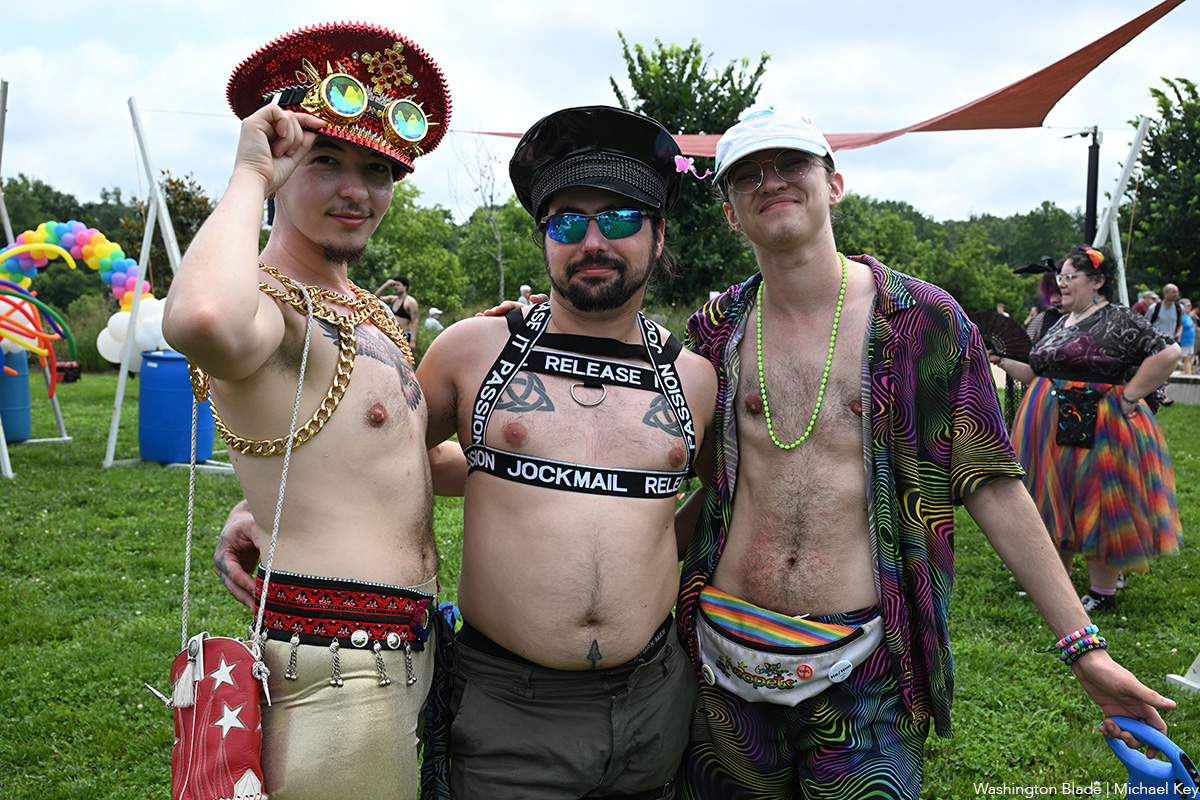
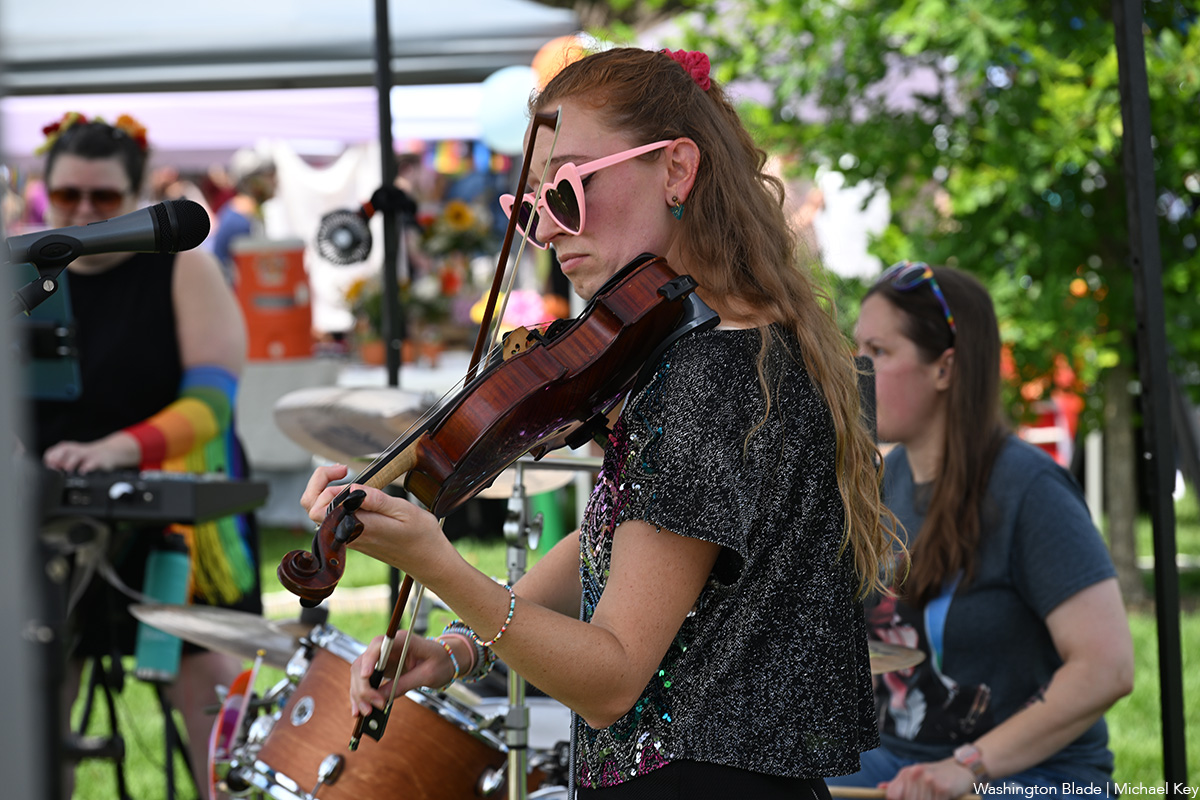
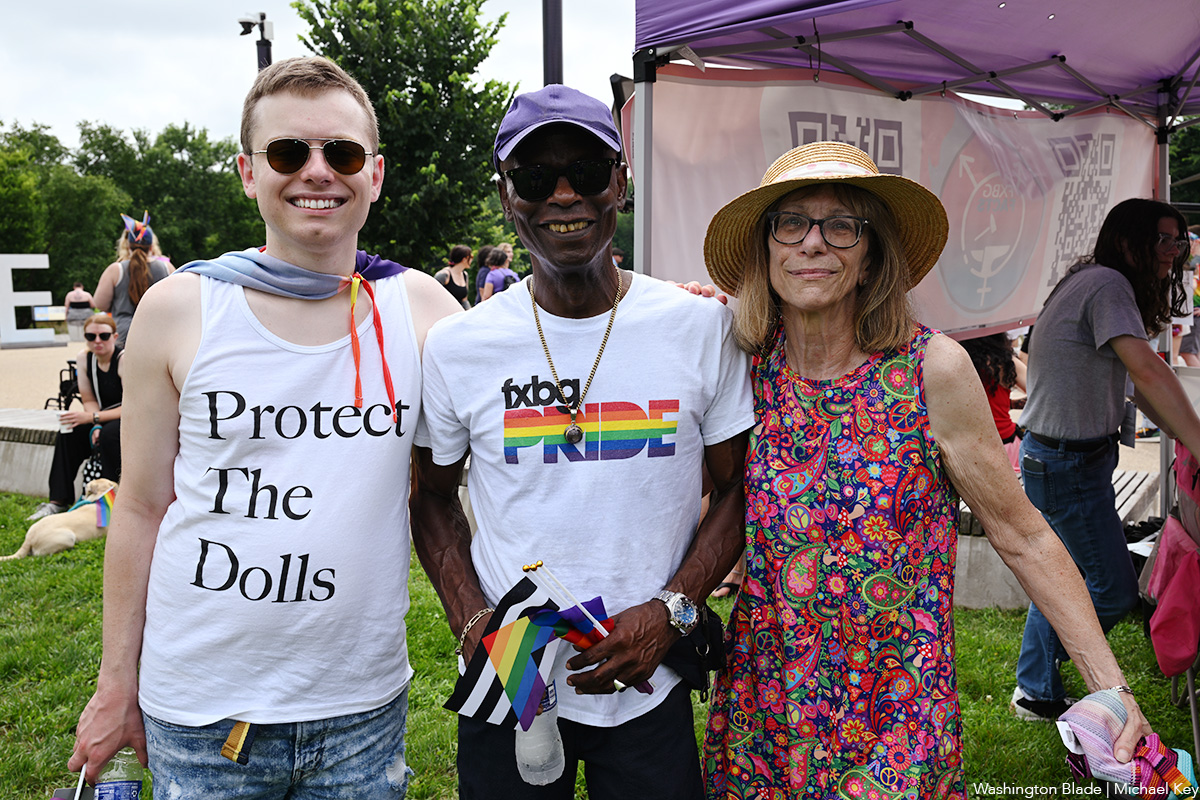
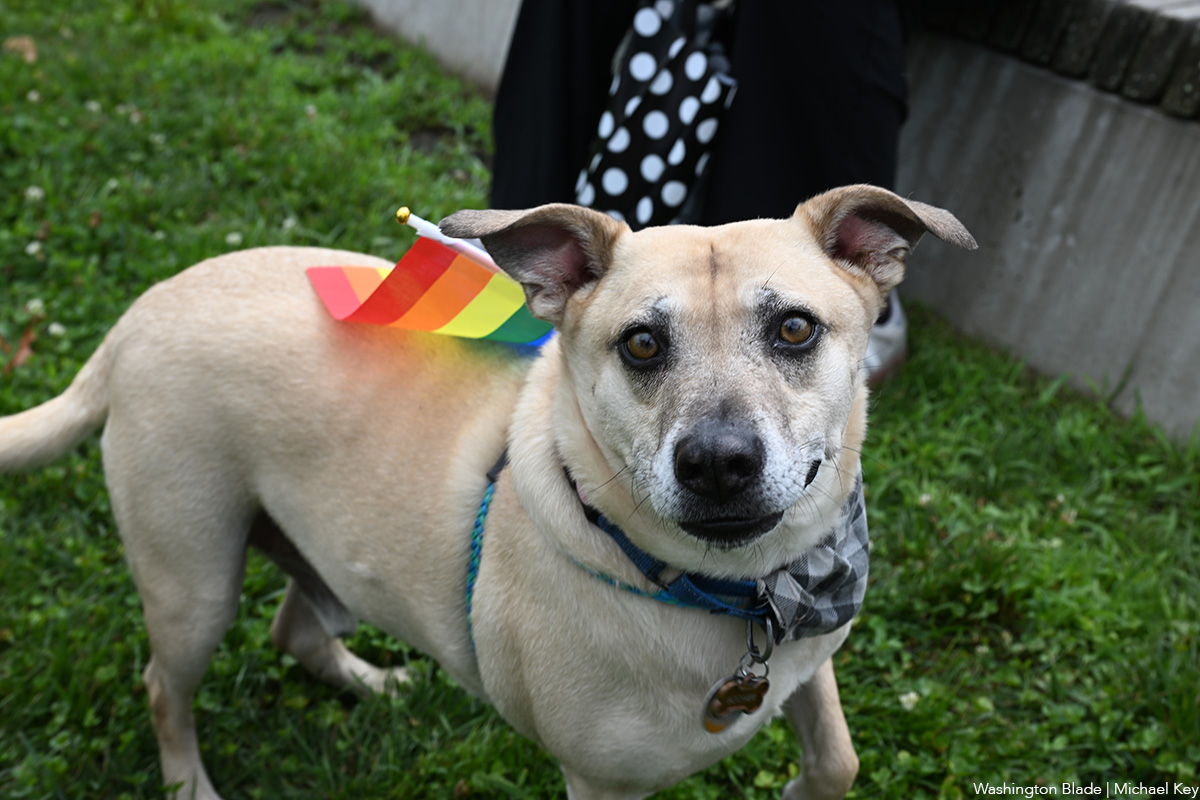
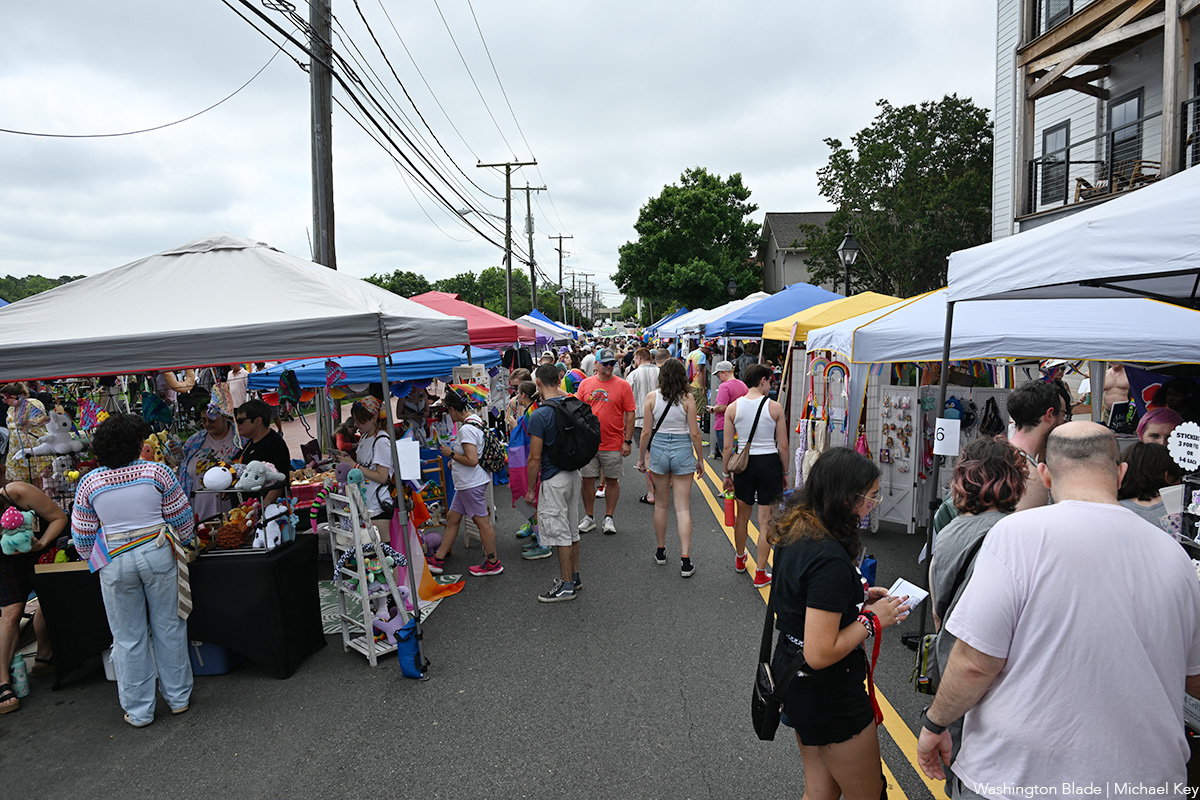
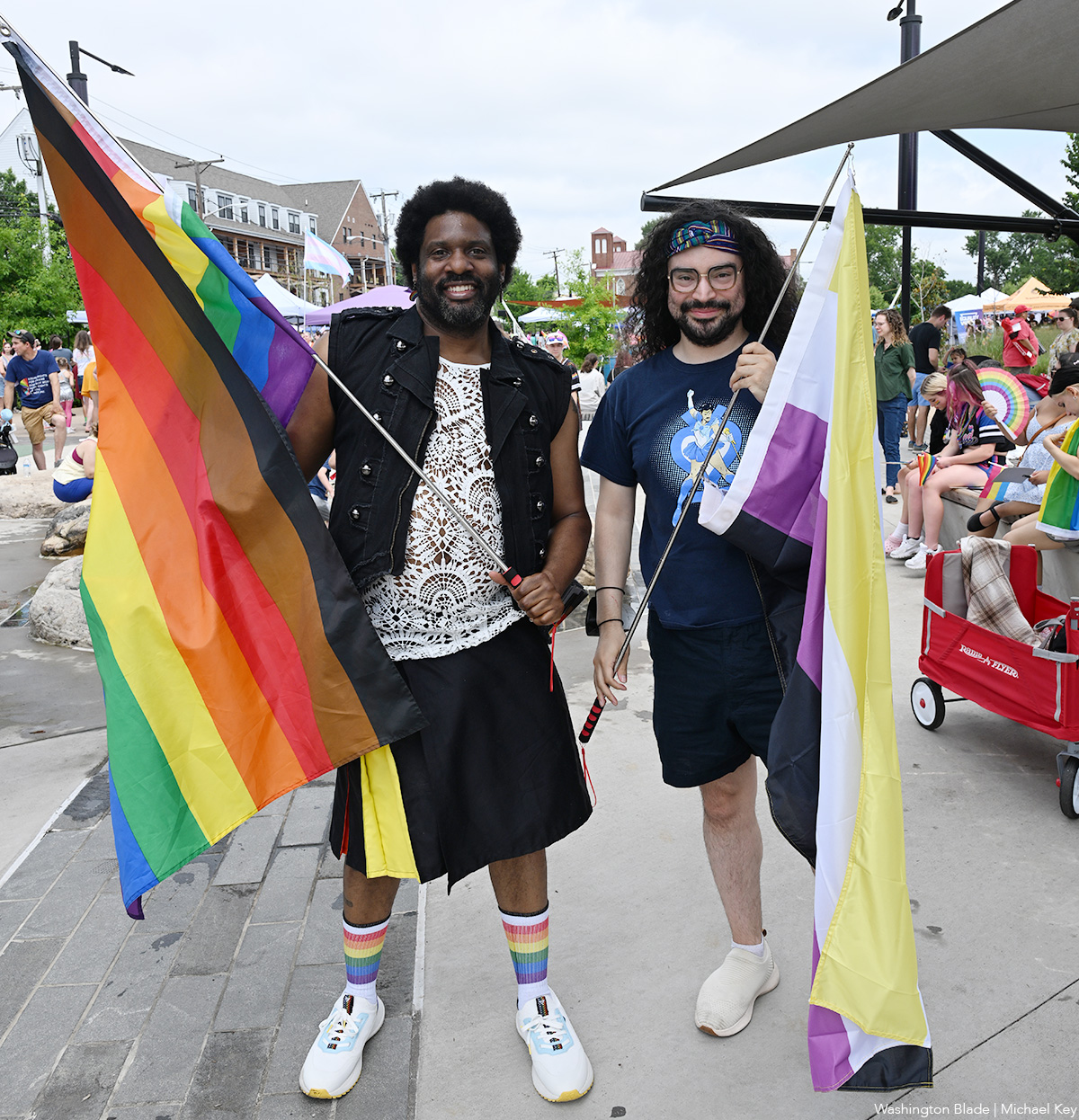

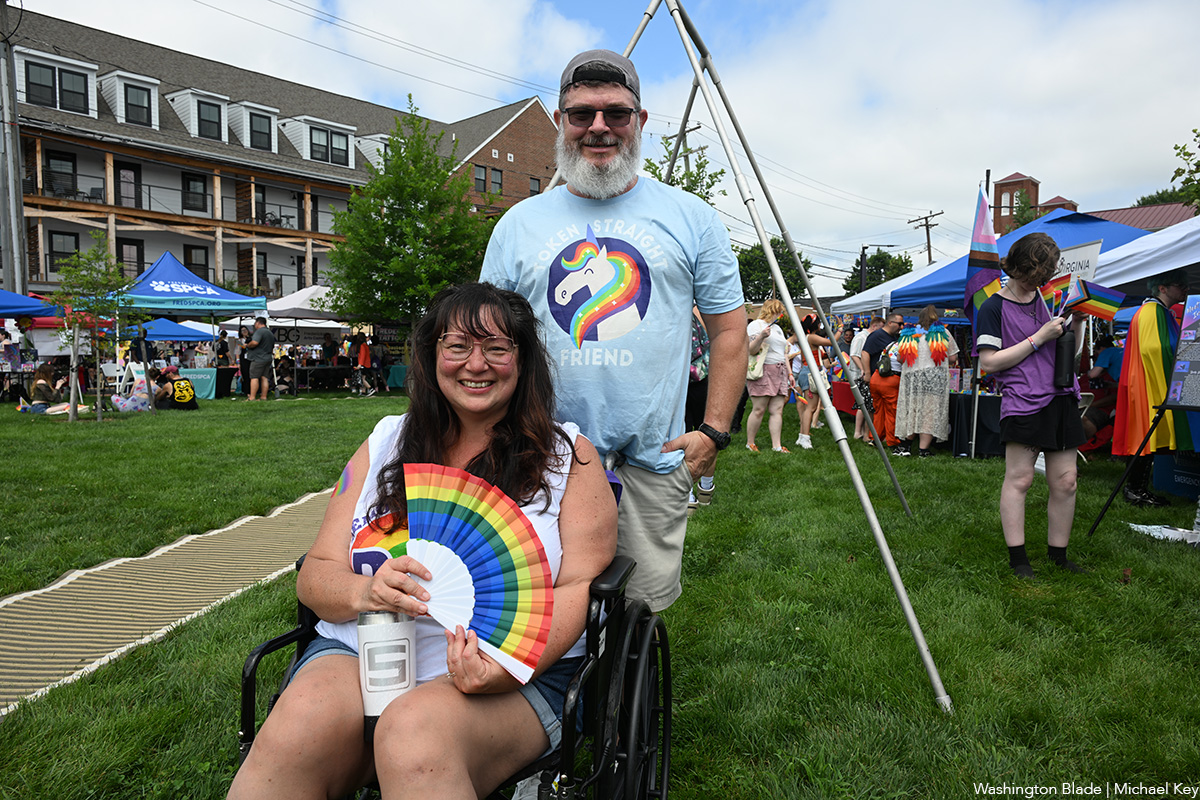
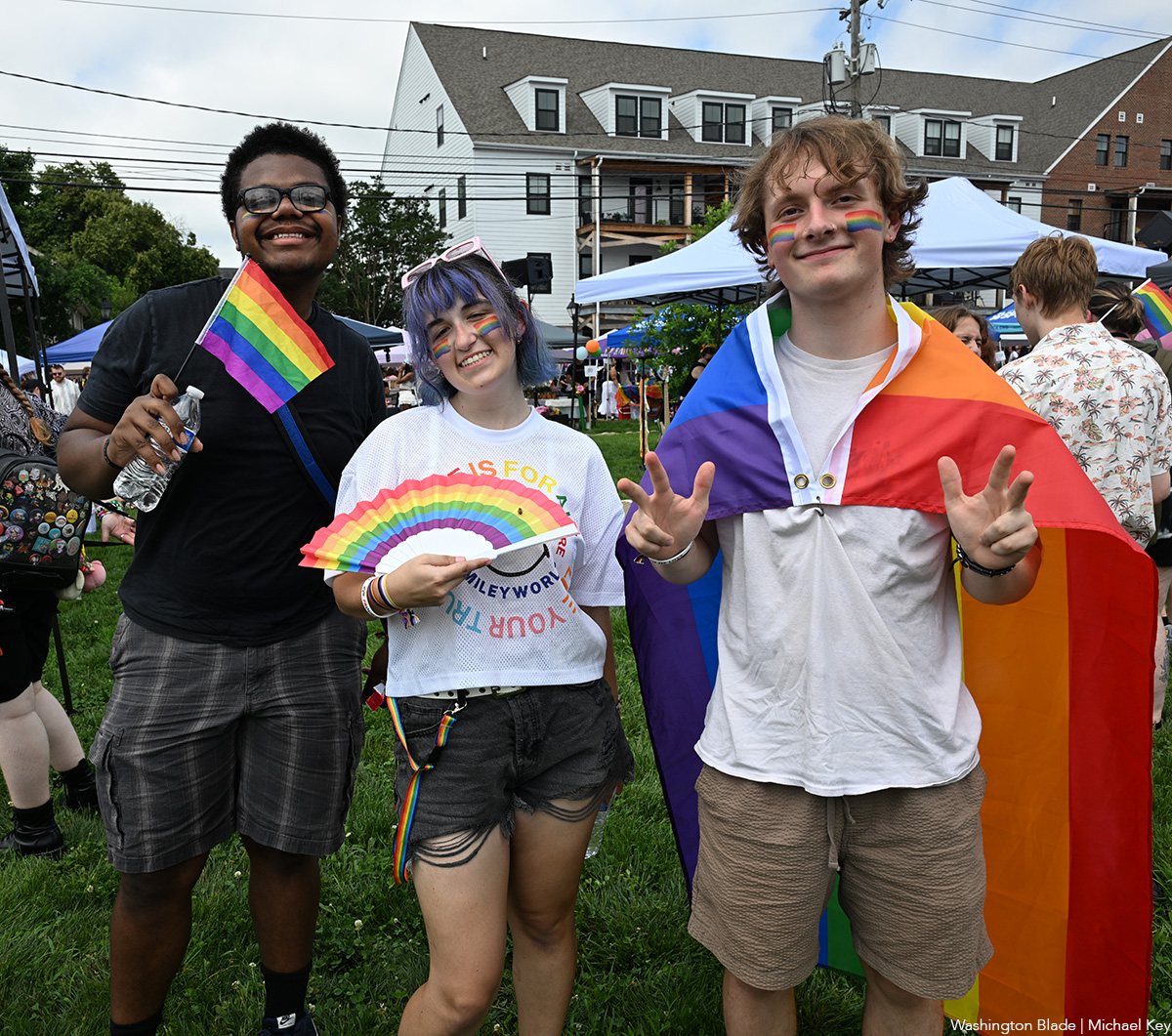
India
Anaya Bangar challenges ban on trans women in female cricket teams
Former Indian cricketer Sanjay Bangar’s daughter has received support
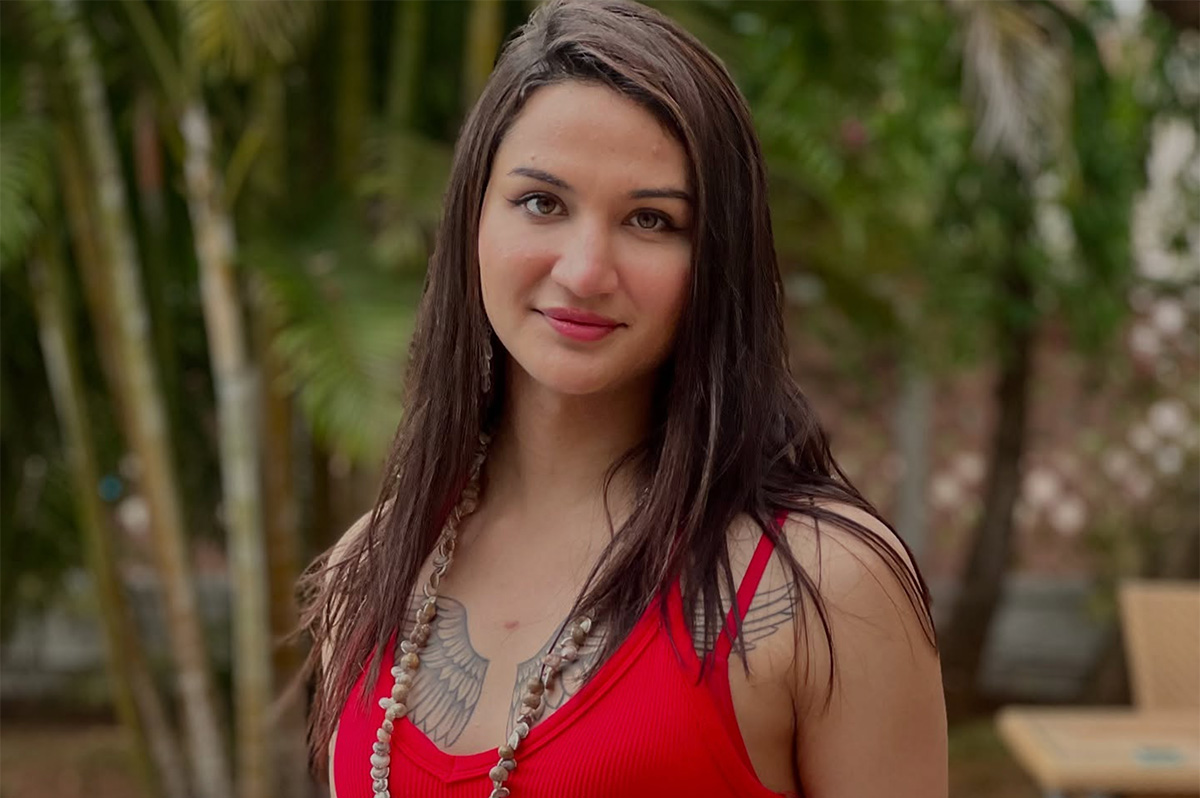
Anaya Bangar, the daughter of former Indian cricketer Sanjay Bangar, has partnered with the Manchester Metropolitan University Institute of Sport in the U.K. to assess her physiological profile following her gender-affirming surgery and undergoing hormone replacement therapy.
From January to March 2025, the 23-year-old underwent an eight-week research project that measured her glucose levels, oxygen uptake, muscle mass, strength, and endurance after extensive training.
The results, shared via Instagram, revealed her metrics align with those of cisgender female athletes, positioning her as eligible for women’s cricket under current scientific standards. Bangar’s findings challenge the International Cricket Council’s 2023 ban on transgender athletes in women’s cricket, prompting her to call for a science-based dialogue with the Board of Control for Cricket in India and the ICC to reform policies for transgender inclusion.
“I am talking with scientific evidence in my hand,” Bangar said in an interview posted to her Instagram page. “So, I hope, this makes an impact and I will be hoping to BCCI and ICC talking with me and discussing this further.”
On Nov. 21, 2023, the ICC enacted a controversial policy barring trans women from international women’s cricket. Finalized after a board meeting in Ahmedabad, India, the regulation prohibits any trans player who has experienced male puberty from competing, irrespective of gender-affirming surgery or hormone therapy. Developed through a 9-month consultation led by the ICC’s Medical Advisory Committee, the rule aims to safeguard the “integrity, safety, and fairness” of women’s cricket but has drawn criticism for excluding athletes like Canada’s Danielle McGahey, the first trans woman to play internationally. The policy, which allows domestic boards to set their own rules, is slated for review by November 2025.
Bangar shared a document on social media verifying her participation in a physiological study at the Manchester Metropolitan University Institute of Sport, conducted from Jan. 20 to March 3, 2025, focused on cricket performance. The report confirmed that her vital metrics — including haemoglobin, blood glucose, peak power, and mean power — aligned with those of cisgender female athletes. Initially, her fasting blood glucose measured 6.1 mmol/L, slightly above the typical non-diabetic range of 4.0–5.9 mmol/L, but subsequent tests showed it normalized, reinforcing the study’s findings that her physical profile meets female athletic standards.
“I am submitting this to the BCCI and ICC, with full transparency and hope,” said Bangar. “My only intention is to start a conversation based on facts not fear. To build space, not divide it.”
In a letter to the BCCI and the ICC, Bangar emphasized her test results from the Manchester Metropolitan University study. She explained that the research aimed to assess how hormone therapy had influenced her strength, stamina, haemoglobin, glucose levels, and overall performance, benchmarked directly against cisgender female athletic standards.
Bangar’s letter to the BCCI and the ICC clarified the Manchester study was not intended as a political statement but as a catalyst for a science-driven dialogue on fairness and inclusion in cricket. She emphasized the importance of prioritizing empirical data over assumptions to shape equitable policies for trans athletes in the sport.
Bangar urged the BCCI, the world’s most influential cricket authority, to initiate a formal dialogue on trans women’s inclusion in women’s cricket, rooted in medical science, performance metrics, and ethical fairness. She called for the exploration of eligibility pathways based on sport-specific criteria, such as haemoglobin thresholds, testosterone suppression timelines, and standardized performance testing. Additionally, she advocated for collaboration with experts, athletes, and legal advisors to develop policies that balance inclusivity with competitive integrity.
“I am releasing my report and story publicly not for sympathy, but for truth. Because inclusion does not mean ignoring fairness, it means measuring it, transparently and responsibly,” said Bangar in a letter to the BCCI. “I would deeply appreciate the opportunity to meet with you or a representative of the BCCI or ICC to present my findings, discuss possible policy pathways, and work towards a future where every athlete is evaluated based on real data, not outdated perceptions.”
Before her transition, Bangar competed for Islam Gymkhana in Mumbai and Hinckley Cricket Club in the U.K., showcasing her talent in domestic cricket circuits. Her father, Sanjay Bangar, was a dependable all-rounder for the Indian national cricket team from 2001 to 2004, playing 12 test matches and 15 One Day Internationals. He later served as a batting coach for the Indian team from 2014 to 2019, contributing to its strategic development.
Cricket in India is a cultural phenomenon, commanding a fanbase of more than 1 billion, with more than 80 percent of global cricket viewership originating from the country.
The International Cricket Council, the sport’s governing body, oversees 12 full member nations and more than 90 associate members, with the U.S. recently gaining associate member status in 2019 and co-hosting the 2024 ICC Men’s T20 World Cup. The BCCI generated approximately $2.25 billion in revenue in the 2023–24 financial year, primarily from the Indian Premier League, bilateral series, and ICC revenue sharing. The ICC earns over $3 billion from media rights in India alone for the 2024–27 cycle, contributing nearly 90 percent of its global media rights revenue, with the BCCI receiving 38.5 percent of the ICC’s annual earnings, approximately $231 million per year.
Women’s cricket in India enjoys a growing fanbase, with over 300 million viewers for the Women’s Premier League in 2024, making it a significant driver of the sport’s global popularity. The International Cricket Council oversees women’s cricket in 12 full member nations and over 90 associate members, with the U.S. fielding a women’s team since gaining associate status in 2019 and competing in ICC events like the 2024 Women’s T20 World Cup qualifiers. The BCCI invests heavily in women’s cricket, allocating approximately $60 million annually to the WPL and domestic programs in 2024–25, while contributing to the ICC’s $20 million budget for women’s cricket development globally. India’s media market for women’s cricket, including WPL broadcasting rights, generated $120 million in 2024, accounting for over 50 percent of the ICC’s women’s cricket media revenue.
“As a woman, I feel when someone says that they are women, then they are, be trans or cis. A trans woman is definitely the same as a cis woman emotionally and in vitals, and specially, when someone is on hormone replacement therapy. Stopping Anaya Bangar from playing is discrimination and violation of her rights. It is really sad and painful that every transwoman need to fight and prove their identity everywhere,” said Indrani Chakraborty, an LGBTQ rights activist and a mother of a trans woman. “If ICC and BCCI is stopping her from playing for being transgender, then I will say this to be their lack of awareness and of course the social mindsets which deny acceptance.”
Chakraborty told the Blade that Bangar is an asset, no matter what. She said that the women’s cricket team will only benefit by participation, but the discriminating policies are the hindrance.
“Actually the transgender community face such discrimination in every sphere. In spite of being potent, they face rejection. This is highly inhuman. These attitudes is regressive and will never let to prosper. Are we really in 2025?,” said Chakraborty. “We, our mindset and the society are the issues. We, as a whole, need to get aware and have to come together for getting justice for Anaya. If today, we remain silent, the entire community will be oppressed. Proper knowledge of gender issues need to be understood.”
The BCCI and the International Cricket Council have not responded to the Blade’s repeated requests for comment.
Theater
‘Andy Warhol in Iran’ a charming look at intersection of art, politics
Mosaic production plumbs kidnapping plot of iconic artist for humor
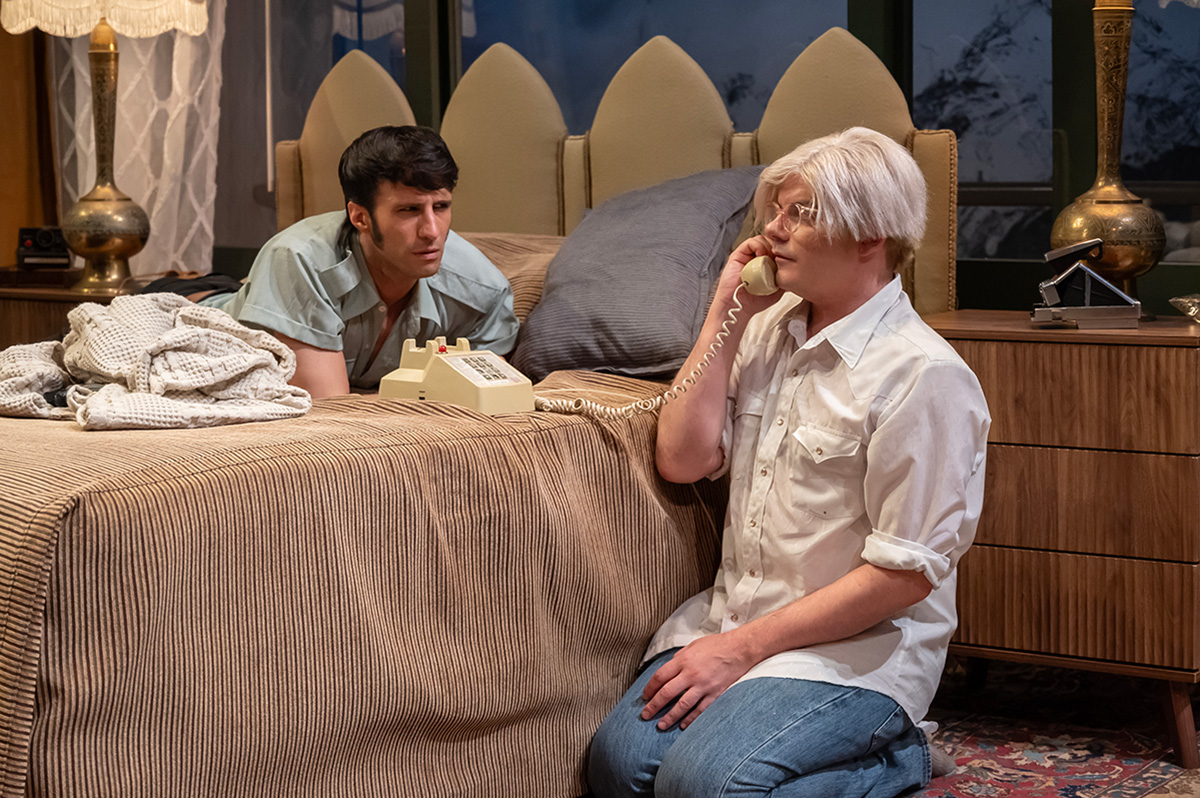
‘Andy Warhol in Iran’
Through July 6
Mosaic Theater Company at Atlas Performing Arts Center
1333 H St., N.E., WDC
$70
Mosaictheater.org
Behind the blasé veneer, Andy Warhol was more curious than people knew. Particularly when it came to money. He kept a close eye on how the ultra-rich lived, what fellow artists were being paid and who was paying them, and, of course, all the new and more saleable ways of making and selling art.
In playwright Brent Askari’s “Andy Warhol in Iran,” now playing at Mosaic Theater Company, Warhol (Alex Mills) is brought outside of his usual area of interest when he lands face to face with a young revolutionary. While Warhol could be artistically revolutionary, he didn’t connect with the idea of forgoing the pursuit of money and fame for the infinitely more difficult task of achieving social justice.
The 90-minute play is not fully factual, but rather inspired by Warhol’s real life 1976 trip to Tehran to make portraits of the royal Pahlavi family in the waning days of their reign, with a focus on Farah Diba, the Shah’s elegant wife and Iran’s last empress.
The action unfolds in a Tehran hotel suite boasting a glorious view of the snowcapped Alborz Mountains not far from Iran’s vibrant and bustling capital. It’s here, disguised as room service, that Farhad (played by Nathan Mohebbi) gains entrance to Warhol’s rooms, seeking to kidnap the pop art star to garner attention for the university students’ movement.
Warhol meets the armed intruder with a sort of wide-eyed wonderment, flummoxed why he has been selected for abduction. Warhol can’t understand why a young man like Farhad wouldn’t prefer to be paid a big ransom on the spot, or be cast as a star in one of the Warhol Factory flicks.
When Farhad replies it’s because Warhol is the most decadent artist in the world, Warhol mistakenly takes it for the ultimate compliment. After all, his biggest successes had been connected to celebrity and consumerism (think Campbell’s Soup Cans. 1962).
For Warhol, decadence is aspirational. He made portraits of financiers, movie stars, and jet setters. In fact, he’d been obsessed with the lives of the rich and famous since he was a small kid in Pittsburgh thumbing through Photoplay Magazine while bed bound with Saint Vitus Dance.
Accompanying Warhol to Tehran (unseen) are his business manager Fred Hughes, and Bob Colacello, editor of Interview magazine. Together, they make a merry trio of gay social climbers. These kinds of trips were a boon to the artist. Not only did they solidify a new strata of high society contacts, but were also superbly lucrative, thickly padding the painter’s pockets.
While in Iran, Warhol wanted only to view Farah’s vast world-class collection of jewels, sample the caviar on tap, and get his Polaroids. Then he’d fly first class back to New York and transfer the images to silk screen and sell the portraits to the Persian royals at a hefty price. He didn’t foresee any obstacles along the way.
Serge Seiden’s direction is spot on. He’s rendered a wonderfully even two-hander with a pair of terrifically cast actors. And Seiden plumbs the piece for humor mostly drawn from the absurdity of the situation without missing any of the serious bits.
As Warhol, out actor Mills is instantly recognizable as the eccentric artist. He’s wearing the button-down shirt, jeans, blazer, glasses, and, of course the famed shock of white hair wig (here a little more Karen than Andy). His portrayal is better than an imitation. He gives a bit of the fey and confused, but has also infuses him with a certain dynamism.
The energy works well with the intensity of Mohebbi’s would-be kidnapper Farhad. And while it isn’t a romance, it’s not impossible to think that Warhol might fall for a handsome male captor.
The connection between art and politics is almost always interesting; and though not a super deep dive into the era or the life of an artist, “Andy Warhol in Iran” is a compelling, charming, and sometimes funny glimpse into that intersection.
-
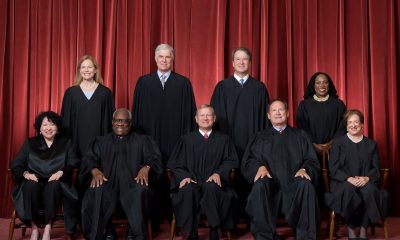
 U.S. Supreme Court4 days ago
U.S. Supreme Court4 days agoSupreme Court upholds ACA rule that makes PrEP, other preventative care free
-

 U.S. Supreme Court4 days ago
U.S. Supreme Court4 days agoSupreme Court rules parents must have option to opt children out of LGBTQ-specific lessons
-
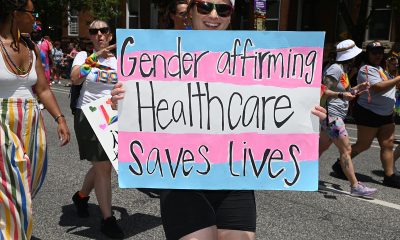
 Congress5 days ago
Congress5 days agoSenate parliamentarian orders removal of gender-affirming care ban from GOP reconciliation bill
-

 District of Columbia5 days ago
District of Columbia5 days agoMan sentenced to 15 years in prison for drug deal that killed two DC gay men

